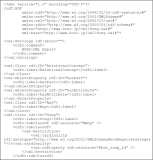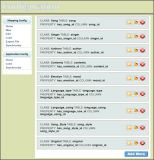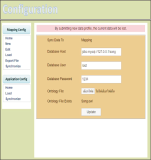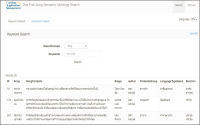
Vol.11 No.1

Abstract
This study determines how social media users (SMUs) verify the information they come across on the Internet. It determines SMUs’ perception of online fact-checking services in terms of their ease of use, usefulness, and trust. By conducting a focus group discussion and key informant interviews, themes were derived in determining fact-checking practices while a survey was further conducted to determine such perceived ease of use, usefulness, and trust in fact-checking services. The thematic analysis revealed major information verification practices, such as cross-checking and verifying with other sources, inspecting comments and reactions, and confirming from personal and social networks. The results showed that SMUs considered fact-checking services easy to use. However, a concern was raised about their usefulness stemming from the delayed action in addressing the information issues that need to be verified. As to perceived trust, it was found that SMUs have reservations about fact-checking services. Finally, it is believed that fact-checking services are expected to be credible and need to be promoted to mitigate any form of fake news, particularly on social media platforms.

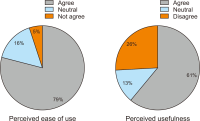
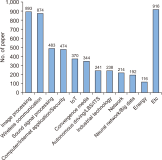
Abstract
The purpose of this study is to compare research trends in the information and communication technology (ICT) field between North and South Korea and analyze the differences by using data mining. Frequency analysis, clustering, and network analysis were performed using keywords from seven South Korean and two North Korean ICT academic journals published for five years (2015-2019). In the case of South Korea (S. Korea), the frequency of research on image processing and wireless communication was high at 16.7% and 16.3%, respectively. North Korea (N. Korea) had a high frequency of research, in the order of 18.2% for image processing, 16.9% for computer/Internet applications/security, and 16.4% for industrial technology. N. Korea’s natural language processing (NLP) sector was 11.9%, far higher than S. Korea’s 0.7 percent. Student education is a unique subject that is not clustered in S. Korea. In order to promote exchanges between the two Koreas in the ICT field, the following specific policies are proposed. Joint research will be easily possible in the image processing sector, with the highest research rate in both Koreas. Technical cooperation of medical images is required. If S. Korea’s high-quality image source is provided free of charge to N. Korea, research materials can be enriched. In the field of NLP, it calls for proposing exchanges such as holding a Korean language information conference, developing a Korean computer operating system. The field of student education encourages support for remote education contents and management know-how, as well as joint research on student remote evaluation.

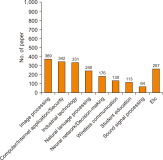
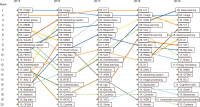
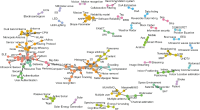
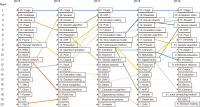


Abstract
Digital service transformation study is a part of research in the field of digital transformation, which is devoted to exploring the transformations that occur in digital service products, which have been intensely explored in recent years to address digital disruption. Several concepts and definitions of digital service transformation have emerged as a result of an approach from the point of view of digital transformation and digital services concepts. This paper is organized to provide a foundational understanding of digital service transformation terminology. This paper uses the systematic literature review method to compile 52 qualified articles from previous studies. We conduct an analysis and synthesis of articles to answer research questions. The results of this study are a descriptive summary of research in the digital service transformation field, determining digital service transformation terminology and components, and also a proposed digital service transformation model to explain the position of transformation in digital service products in the overall transformation process. We construct this model using the findings of previously determined components synthesis.

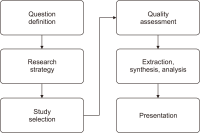

Abstract
This study endeavors to answer four research questions: (a) Who are the celebrities? (b) How popular are they? (c) What do they post on social media platforms? (d) How do their followers react to them? Following quantitative methods, this study analyzes the top 195 Facebook celebrities of Bangladesh and their 9,441 Facebook posts’ interactions. The result suggests that actors, music-related celebrities, and sports stars are the most popular celebrities. While male celebrities have a higher frequency, female celebrities have higher average followers than their male counterparts. Celebrities mostly share photos on Facebook, perhaps to recreate their public images and provide regular updates to their followers. The followers also engage the most in photos with affection and surprise reactions. Their reactions to celebrities’ Facebook content are highly positive. Some strengths and limitations of this study are also discussed.
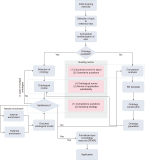
Abstract
Ontological knowledge modelling of epic texts, though being an established research arena backed by concrete multilingual and multicultural works, still suffers from two key shortcomings. Firstly, all epic ontological models developed till date have been designed following ad-hoc methodologies, most often combining existing general purpose ontology development methodologies. Secondly, none of the ad-hoc methodologies consider the potential reuse of existing epic ontological models for enrichment, if available. This paper presents, as a unified solution to the above shortcomings, the design and development of GOMME - the first dedicated methodology for iterative ontological modelling of epics, potentially extensible to works in different research arenas of digital humanities in general. GOMME is grounded in transdisciplinary foundations of canonical norms for epics, knowledge modelling best practices, application satisfiability norms, and cognitive generative questions. It is also the first methodology (in epic modelling but also in general) to be flexible enough to integrate, in practice, the options of knowledge modelling via reuse or from scratch. The feasibility of GOMME is validated via a first brief implementation of ontological modelling of the Indian epic Mahabharata by reusing an existing ontology. The preliminary results are promising, with the GOMME-produced model being both ontologically thorough and competent performance-wise.





Abstract
This study aimed to develop an ontology for Thai country songs by using the seven steps of an ontology development process. Hozo-Ontology Editor software and Ontology Application Management Framework were tools used in this study. Nine classes of ontology were identified: song, singer, emotion, author, language used, language type, song style, original, and content, and it was found that the song class had a relationship with all of the other classes. The developed ontology was evaluated by seeking opinions from experts in the field of Thai country songs, who agreed that the ontology was highly effective. Additionally, the evaluation employed the knowledge retrieval concept, and the precision, recall, and overall effectiveness were measured, with a precision of 92.59%, a recall of 86.21%, and an overall effectiveness (F-measure) of 89.28%. These results indicate that the developed ontology is highly effective in describing the scope of knowledge of Thai country songs.


